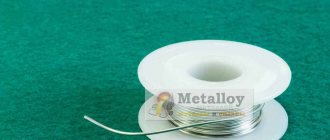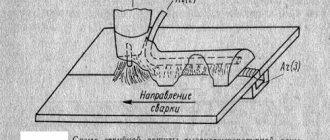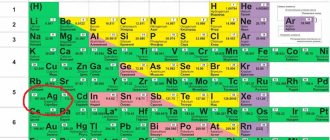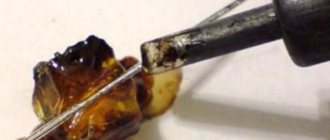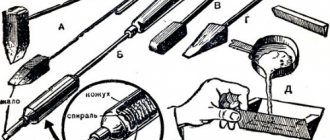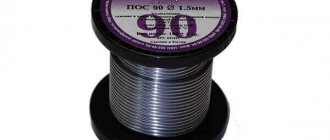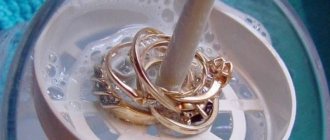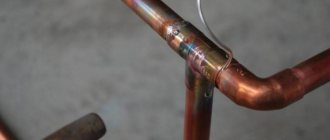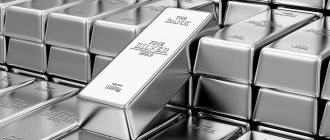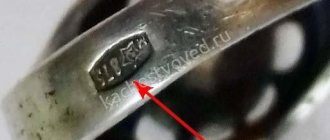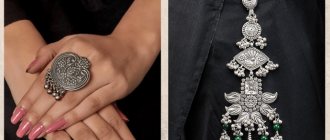What is silver solder?
Silver solder is a special matter and requires special attention. The fact is that it is excellent for so-called step soldering, which refers to modern technologies for working with metals.
Some silver alloys can withstand very high temperatures - up to 600°C. It is this property that explains the high quality of soldering with such alloys.
Pure silver solder is rare. First of all, it's expensive. It is much cheaper and more effective to use its alloys with other metals, this is called silver-based solder. They most often contain cadmium, nickel, copper and zinc - excellent companions.
Pure silver solders are, of course, used, but only in jewelry, which is understandable.
Certificate for soft solders.
The properties of alloys depend primarily on the proportion of silver. If, for example, its content is above 50%, the alloy becomes ductile and resistant to significant loads. All possible options for silver alloys are set out in a special standard - this is GOST 19738-74 “Silver solders”.
An excellent option for saving money is home production of silver alloy for soldering with your own hands, which we will also analyze.
Physicochemical characteristics
In such alloys, silver is not always the main element. It is, for example, extremely popular when soldering stainless steel or other complex metals. Everyone knows the rule - the higher the silver percentage in the solder, the more ductile and stronger the connection is when soldering.
In addition, the melting point of silver solder with a high proportion of base metal allows greater freedom in choosing the temperature range in the use of the finished product.
One of the most common silver solder compositions is as follows:
- silver – 30%;
- copper – 20%;
- zinc – 16%;
- cadmium – 33%
This composition contains cadmium, which means the alloy is quite brittle. This silver solder is used in soldering products that will not be subject to any vibrations.
If you increase the proportion of soldering silver above 50%, you will get a mixture of metals with high fluidity and excellent resistance to later stress.
What kind of solders are used?
Silver solders are used for soldering silver objects, including in industry. They are an alloy of silver with other metals and are characterized by reliability, strength and, most importantly, resistance of welds to corrosion.
The most popular are PSR-10, PSR-15, PSR-25 (the number at the end reflects the precious metal content as a percentage). And to enhance anti-corrosion protection during soldering, for example, PSR-70 can be used.
The brands differ from each other not only in composition, but also in density, melting point, and resistance to electricity.
Read also: Features of vertical seam welding
Solders can be sold in the form of ready-made powder or cut into pieces of 2-3 millimeters. You can also find solders in the form of wire or solid sheets - in this case, you will have to cut the pieces of the required size yourself (this is easy to do with ordinary wire cutters).
How to choose the right solder?
It’s not so easy to choose the most suitable option from a huge number of different alloys. Clearly, if vibration resistance and high shock resistance are your top priorities, you should opt for high-silver options.
The same choice applies to working with refrigeration and climate control equipment.
Partner metals behave differently. If, for example, lead should never be added to the alloy when working with products that are resistant to high temperatures, then copper behaves perfectly under such conditions and is an excellent partner for the main components.
If the alloy contains cadmium, then there is increased brittleness - which is why it is a rare element in silver-based solders.
But phosphorus is a popular additive due to its ability to reduce the melting point, which is useful when working with stainless steel, aluminum and other complex metals.
Silver percentage
The proportion of base metal in silver solder determines the thermal and electrical conductivity of the material.
Low
Such tin-silver solders, containing from 1.5% Ag, are popular in the electrical industry, the production of pipelines and vessels, they allow you to quickly and efficiently connect workpieces, contacts and other parts. Low resistance, high fluidity and affordable price allow the composition to be widely used.
Average
A silver share of 40-60% makes it possible to solder highly loaded connections . However, materials containing tin and silver are not recommended for use in high temperature environments. They are suitable for operation in conditions of vibration loads and chemically active environments.
High
These compounds are used for the most complex and critical compounds . Thus, the composition PSr65, containing 2% Cu and 14% Zn, is used for soldering saw blades. It is able to withstand breaking and bending forces.
PSr70 is used in the production of powerful generators, where resistance plays a decisive role.
DIY silver solder
The word "prepare" is quite an appropriate expression in this section because silver solder can be prepared in many ways, including the old technique. Let us immediately note that here you need practice to achieve perfection.
GOST for silver solders.
The old recipe requires two coins: a copper nickel from 1962 and a fifty-kopeck coin from 1924, and additional metals, a gas burner for soldering silver and a spoon.
It starts like a fairy tale: we melt silver in a spoon. Then lower the copper coin and mix, rolling the spoon. The more patiently you roll the spoon, the better the mixing will be. After this, the solution is poured into a metal mold called “ingus” and rolled out again.
The alloy prepared in such a primitive way actually has very high qualities: it is pure sample No. 900.
An important factor in the quality of preparation is fresh flux. The flame in the burner must be monitored very carefully: it should be soft, and a not very hot fire should resemble a broom in outline. In this case, the seam will turn out to be of truly high quality.
To repair products, solder is made light in the following composition:
- silver – 7 parts;
- brass – 2.8 parts;
- zinc – 0.35 parts.
We stock up on the following materials for work:
- spoon;
- soldering torch;
- sandpaper or sandpaper;
- scissors, folds, scales;
- mixing spatula;
- borax for adding to the finished melt.
You need to work with brass first - clean it from the oxide film. Melt silver with hallmark No. 999 in a spoon, add brass and mix well right in the spoon. After complete melting, add zinc.
You can add zinc in its pure form, or in an alloy with brass or copper. Zinc is often added by wrapping it in foil. We begin to roll the composition. We cut the finished rolled sheet with scissors.
Solder making procedure
The cast iron bowl needs to be lubricated with wax and then heated using a gas burner. Preparation of solder begins with melting the silver; you will need about 3 grams of it. Next, brass, zinc and copper (1 g) are added in turn. The solder melt should be poured into a pre-prepared mold. This must be done quickly, since the melt cools very quickly.
Tin solder, which is widely used by many radio amateurs, can be made almost as easily. To prepare it you will need cans and lids. To be more precise, this is how tin is extracted from old and unnecessary things.
The procedure for extracting pure tin is as follows:
- Take a tin can and fill it with water, then boil the water and drain it;
- We connect a 9-volt battery and three AA batteries. We connect the plus to the jar, and the minus to the electrode rod;
- We lower the electrode into the water so that it does not touch the walls of the jar;
- Pour a solution of soda or sodium hydroxide into a jar.
After the reaction occurs, a deposit in the form of pure tin can be detected on the electrode. Well, getting lead is even easier; to do this, you just need to remove the plates from an old, unnecessary battery.
Accordingly, by melting tin and lead in certain proportions, we will obtain high-quality and natural tin-lead solder. You can find out the proportions of mixing tin with lead from the table above.
Melting solder
If you decide to do without old recipes, stock up on these materials:
- container with water;
- wood mixture with coal;
- borax;
- crucible and iron hook.
Solder composition and melting point.
We melt metals in a crucible, which must be placed in a forge or heated with a blowtorch. During melting, be sure to add borax. It is important to know and follow a clear sequence of the process. The main thing is to melt refractory metals first, and only then fusible ones.
Liquid metals are constantly stirred in the crucible with a hook or wooden stick. It is better to divide the process into two stages. The crucible with molten metals is removed from the furnace, and the metal is combined with water. The resulting small drops of metal are dried and melted again, adding borax.
After final melting, pour the solder into the mold. When it hardens, roll it into strips.
The most important part of the silver soldering process at home is the transition of the alloy from liquid to solid state. First, the mixture is melted and then cast into ingus.
The preparation of the spoon is as follows: a rectangular-shaped cardboard is placed on its bottom, and a plate is placed on top of it so that its edges wrap around the edges of the spoon. Cardboard sheets are carefully crimped to form a concave-shaped bed.
Sorting of the charge is carried out on special jewelry scales, scrap silver of different samples is checked and weighed: 916 and 875, pure silver, metal, borax. The charge is divided into equal piles of approximately twenty grams, it is cleaned using a magnet to remove impurities of iron and steel.
Scrap with purity 875 is mixed with the remaining parts. Borax acts as a flux.
The proportion of silver sample No. 875 and copper is exactly 4:1 (three copper nickels and one fifty kopecks), borax is added at the rate of one part per ten parts of the charge.
Ingus or another form is greased with wax and placed next to the burner. The fact is that the melt should under no circumstances cool down. Therefore, it is poured into well-heated ingus. The mold is then placed under cold water to cool. The cooled block is removed.
Accurate all ingredients and their sorting
One recipe requires the exact content of the following ingredients:
- 20 g 916 silver;
- 875 silver scrap;
- 12 g pure silver;
- metals;
- borax;
- gas-burner.
It is recommended to distribute the metal to create solder in small separate piles. Then everything is done according to the recipe used and mixed thoroughly. Then you should add borax 1/10 of the total amount. And only after that you can start heating it in a spoon.
It is necessary to place the ingus close to the process. To begin with, it should be lubricated with wax and then heated, because the material cannot be placed from a hot to a cold container. When heated, the composition must be at the same temperature, so as soon as the required consistency is achieved. It immediately pours into ingus. Once the solder is in the desired shape. You need to put it in cold water. When completely cooled, the block is pulled out. It should be remembered that the cardboard in the spoon can withstand no more than five processes of this kind, then it needs to be changed.
Hi all! Today I’ll tell you a little about how to solder silver with tin with your own hands. This question often arises when the female half asks to solder a silver ring, chain or earrings. For any radio amateur, this is a challenge and a reason to get out jars of flux.
A few words about fluxes
The purpose of fluxes is to protect the soldering metal from the effects of oxides by isolating the soldering area from air. The most common composition of fluxes for repairs is a mixture of potash and borax in equal proportions; sometimes soda is used instead of potash.
To obtain powdered borax, you must first dry the aqueous solution of borax. It is better to do this on a regular gas stove in a porcelain evaporation container.
Once the solution turns into crystals, they need to be ground to a powder. Flux must be removed after soldering with a weak heated acid solution.
Medium melting alloys
Silver solder has unique qualities:
- highest strength;
- resistance to corrosion and in aggressive environments;
- low melting point;
- high thermal conductivity.
In addition, it perfectly fills all the gaps between soldered surfaces and fits perfectly on any metal surface.
Making silver solder is easy, creative and very fun. And if you take into account the significant cost savings, then silver soldering is a method that is worth learning.
What fluxes are suitable?
To create a strong connection, it is necessary to properly prepare the surfaces for soldering. To do this, they are cleaned mechanically. Silver solder is used with soldering flux - a liquid or paste that destroys the oxide film and facilitates soldering, increasing the fluidity of the melt.
Borax powder is widely used. It is diluted in a small amount of water, heated and stirred until solder paste is formed.
With this composition you can solder from 490 to 910°C
Ready-made soldering fluids and pastes are also widely available on the market. It is better for a novice master to use purchased materials. Making your own fluxes requires skills in handling strong chemicals.
